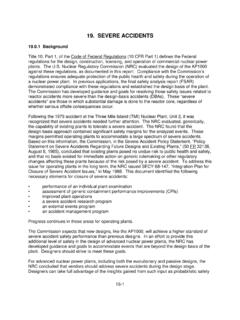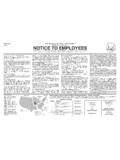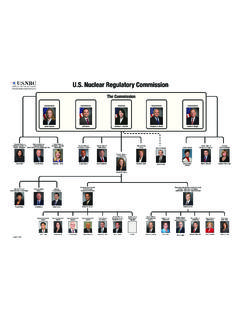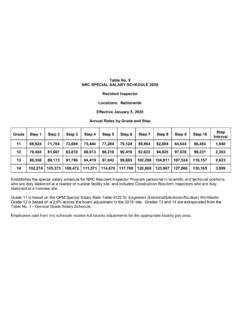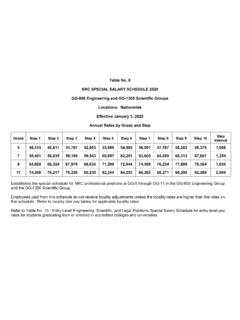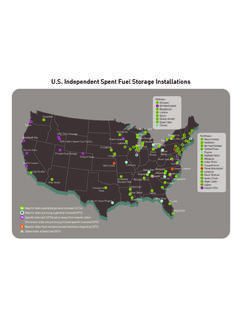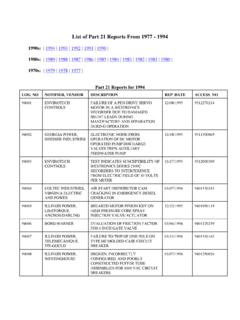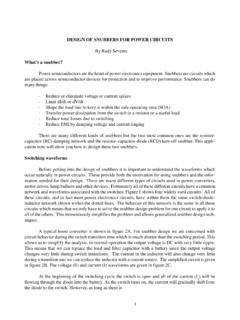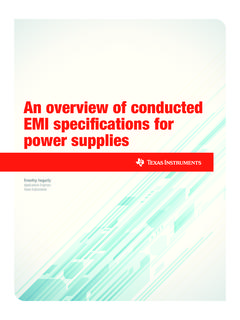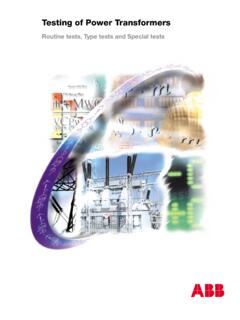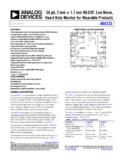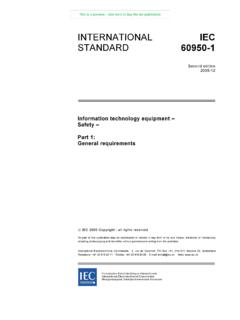Transcription of What is a Megawatt? - Nuclear Regulatory Commission
1 24, 2012 What is a Megawatt? Mega-what? The term is tossed around a lot. Megawatts are basic to understanding electricityplanning concepts, but what are they? (In the spirit of today s IssueAlert article, we will present acomplimentary copy of UtiliPoint s Renewables InfoGrid to the first three readers who correctlyanswer the question at the end of this article.)News stories covering electric generation topics often try to illustrate the worth of a megawatt interms of how many homes a particular amount of generation could serve.
2 A June 11, 2003 Reuters article describing the potential sale of AEP s Texas generation facilities states that AEP is offeringto sell 29 generating units with a total net generation capacity of 4,497 megawatts, or roughlyenough electricity to power million average A May 21, 2003 article in the San DiegoUnion Tribune describes an agreement with Sempra that involves 1,900 megawatts, enough tosupply million articles give the impression that one megawatt is enough electricity to supply 1,000 , occasionally, an article will illustrate a different conversion such as an April 17, 2003 article byEnvironment News Service which states Tucson Electric power expanded its solar capacity to , enough to power 420 what really is a megawatt (MW) and how many homes can one MW of generation really serve?
3 The BasicsThe answer starts with understanding the basic definition of energy terms. Watts (W) are theyardstick for measuring power . A one hundred watt light bulb, for example, is rated to consume onehundred watts of power when turned on. If such a light bulb were on for four hours it would consumea total of 400 watt-hours (Wh) of energy. Watts, therefore, measure instantaneous power while watt-hours measure the total amount of energy consumed over a period of megawatt (MW) is one million watts and a kilowatt (kW) is one thousand watts.
4 Both terms arecommonly used in the power business when describing generation or load consumption. Forinstance, a 100 MW rated wind farm is capable of producing 100 MW during peak winds, but willproduce much less than its rated amount when winds are light. As a result of these varying windspeeds, over the course of a year a wind farm may only average 30 MW of power , a 1,000 MW coal plant may average 750 MW of production over the course of a yearbecause the plant will shut down for maintenance from time-to-time and the plant operates at lessthan its rated capability when other power plants can produce power less ratio of a power plant s average production to its rated capability is known as capacity factor.
5 Inthe previous example, the wind farm would have a 30 percent capacity factor (30 MW averageproduction divided by 100 MW rated capability) and the coal plant would have a 75 percentcapacity factor (750 MW average divided by 1,000 MW rated capability). Load factor generally, onthe other hand, is calculated by dividing the average load by the peak load over a certain period oftime. If the residential load at a utility averaged 5,000 MW over the course of a year and the peakload was 10,000 MW, then the residential customers would be said to have a load factor of 50percent (5,000 MW average divided by 10,000 MW peak ).
6 Knowing the peak and average demand of a power system is critical to proper planning. The powersystem must be designed to serve the peak load, in this example 10,000 MW. But the actual loadwill vary. The load might be 10,000 MW at noon, but only 4,000 MW at midnight, when fewerappliances are operating. The capacity or load factor gives utility planners a sense of this 40 percent load factor would indicate large variations occur in load, while a 90 percent load factorwould indicate little variation.
7 Residential homes tend to have low load factors because people arehome and using appliances only during certain hours of the day, while certain industrial customerwill have very high load factors because they operate 24 hours a day, 7 days a Electricity ConsumptionThe amount of electricity consumed by a typical residential household varies dramatically by regionof the country. According to 2001 Energy Information Administration (EIA) data, New Englandresidential customers consume the least amount of electricity, averaging 653 kilowatt hours (kWh)of load in a month, while the East South Central region, which includes states such as Georgia andAlabama and Tennessee, consumes nearly double that amount at 1,193 kWh per Division StateNumber of ConsumersAverage Monthly Consumption (kWh)
8 New England5,822,935618 Middle Atlantic15,045,495641 East North Central18,705,754763 West North Central8,287,837903 South Atlantic22,473,7971,088 East South Central7,356,9751,193 West South Central12,883,4031,151 Mountain7,368,280847 West Coast15,763,570668 Hawaii & Alaska609, Total114,317,707877 The large disparity in electric consumption is driven by many factors including the heavier use of airconditioning in the South. So it stands to reason that a one megawatt generator in the Northeastwould be capable of serving about twice as many households as a generator located in the Southbecause households in the Northeast consume half the amount of electricity as those in the through the math, a 1,000 megawatt rated coal generator with a 75 percent capacity factorgenerates about billion kWhs in a year, equivalent to the amount of power consumed by about900,000 homes in the Northeast but only 460.
9 000 homes in the South. In other words, eachmegawatt of rated capacity for a coal plant in the Northeast generates the equivalent amount ofelectricity consumed by 900 homes in the Northeast but only about 460 homes in the comparison, a 30 percent capacity factor, 100 MW wind farm would generate the equivalentamount of power consumed by about 35,000 homes in the Northeast and 18,000 homes in theSouth. In other words, each megawatt of rated capacity for a wind farm in the Northeast generatesthe equivalent amount of electricity consumed by 350 homes in the Northeast and 180 homes in What is a Megawatt Worth?
10 The examples demonstrate that there are two very important aspects to knowing what a MW ofgeneration capacity is worth in terms of how many equivalent homes it represents. The first factor ishow much electricity the power plant itself produces, which can be calculated by knowing the plant srating and capacity factor. Second, the location of the plant is very important as the amount ofelectricity consumed in a typical household can vary dramatically across the numbers used in the examples were typical representations of coal and wind power plants.
